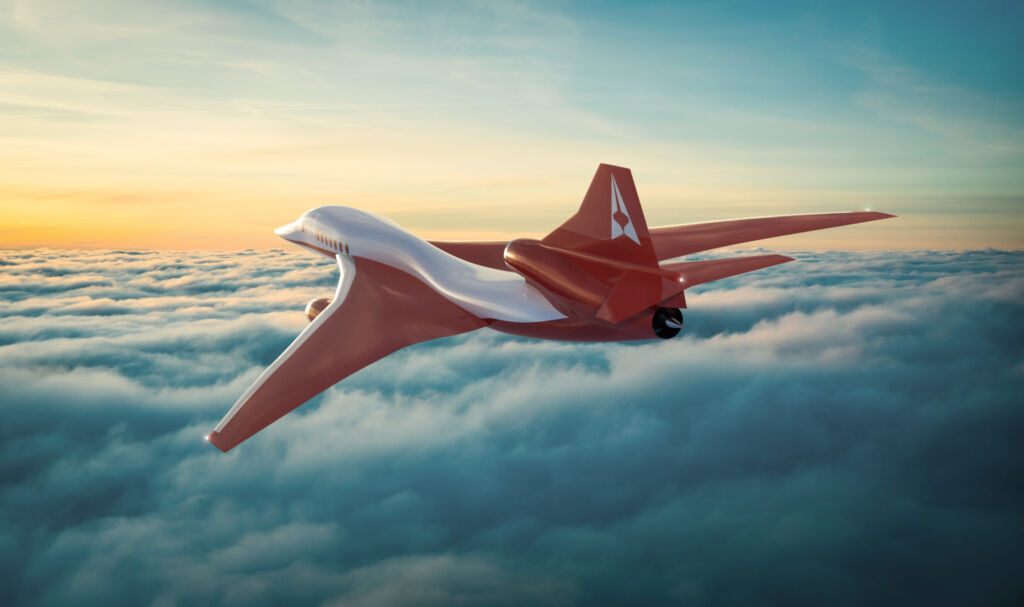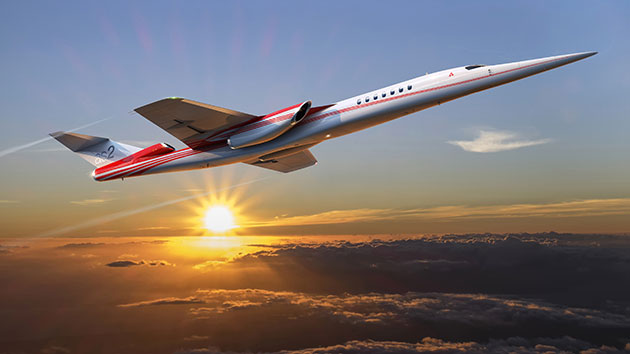Universal Avionics (UA) announces the selection of its ClearVision Enhanced Flight Vision System (EFVS) for the Aerion AS2. The company’s complete Head-Up Display (HUD) and EFVS solution featuring the SkyLens™ Head-Wearable Display (HWD) with its proven unlimited Field of Regard will be installed in the world’s first supersonic business jet.
“Universal Avionics is proud to be selected as the Enhanced Flight Vision System provider for the AS2 supersonic business jet,” said Dror Yahav, UA Chief Executive Officer. “By using the SkyLens as a wearable Head-Up Display, the ClearVision EFVS brings unprecedented capabilities to the airplane and demonstrates a compelling roadmap to the future, on top of the proven operational landing credit and all-weather operation.”
ClearVision provides an innovative Combined Vision System (CVS) displayed on the pilot and copilot SkyLens HWD, the only display of its kind certified today for commercial aviation. The intuitive avionics suite includes UA’s high-resolution EVS-5000 Enhanced Vision System (EVS) camera, composed of six sensors for a comprehensive and unprecedented multispectral coverage, and 3D Synthetic Vision System (SVS). ClearVision greatly improves crew resource management in the cockpit of the AS2, supporting Aerion’s ongoing mission of faster point-to-point travel. In addition, ClearVision offers pilots the ability to overcome degraded visibility situations day and night to move in and out of airports faster, saving time and increasing operational efficiency. With SkyLens, pilots continuously operate head-up and are able to monitor flight information while retaining 3D situational awareness of terrain, and eventually aircraft traffic, through the system’s unlimited 360-degree Field of Regard.
“We are truly excited to bring ClearVision to the highest levels of the business aviation market,” commented Marc Bouliane, UA Vice President of Business Development, Marketing and Services. “For the past year, we have worked diligently with Aerion’s engineering, flight operations and supply chain teams to refine a solution that fits the vision set forth by Aerion. We are honored to have been selected for this ground-breaking project and look forward to the production launch of the AS2 in 2023.”
ClearVision is a trusted and certified solution, flying today on a number of fixed wing and rotary wing aircraft. Nearly 3,000 ClearVision EVS cameras have been fielded to date. Pilots have a discernable Visual Advantage against incandescent and LED airport lighting systems, and the compact size of SkyLens is critical for profiled cockpits such as in the AS2.
“With a proven track record of innovation, Universal Avionics has become the market leader in Head-Wearable Display systems and EVS sensors. This industry-leading technology will offer pilots of the AS2 unparalleled vision and enhanced situational awareness capabilities,” said Steve Berroth, Aerion’s Chief Operating Officer and Executive Vice President of Aircraft Development. “We look forward to our continued collaboration as we seek to change the future of aviation together.”
Aerion’s pursuit of faster point-to-point travel begins with the launch of the AS2 supersonic business jet. Designed to be inherently environmentally responsible from first flight, the AS2 is the first supersonic aircraft designed to be powered by 100% engineered synthetic fuel and reach supersonic speeds without the need for an afterburner.
The manufacture of 300 AS2 aircraft is planned for the first decade of production. The AS2 will be the first aircraft to be assembled at the company’s new global headquarters in Melbourne, Florida – Aerion Park. The state-of-the-art development – powered by sustainable technology – will incorporate headquarters operations plus an integrated campus for research, design, build, and maintenance of the company’s supersonic aircraft.






